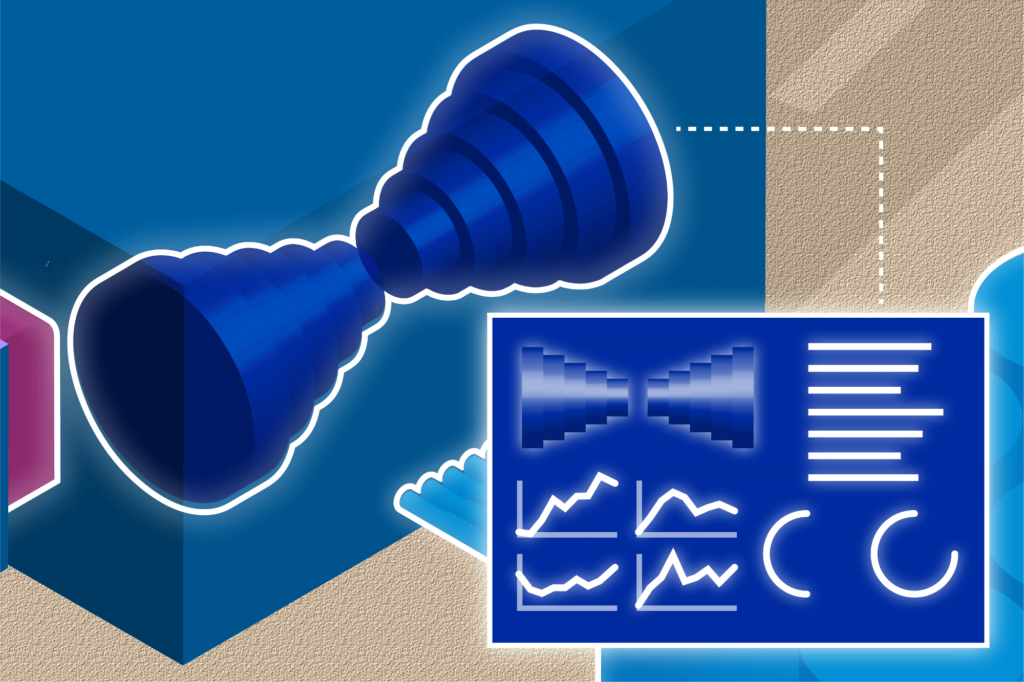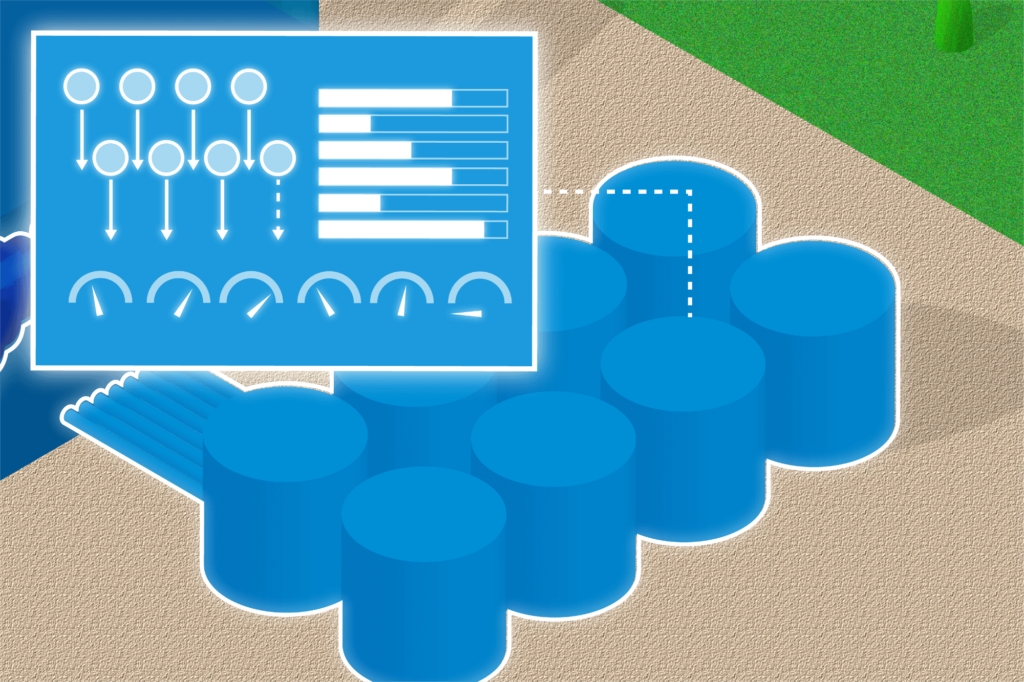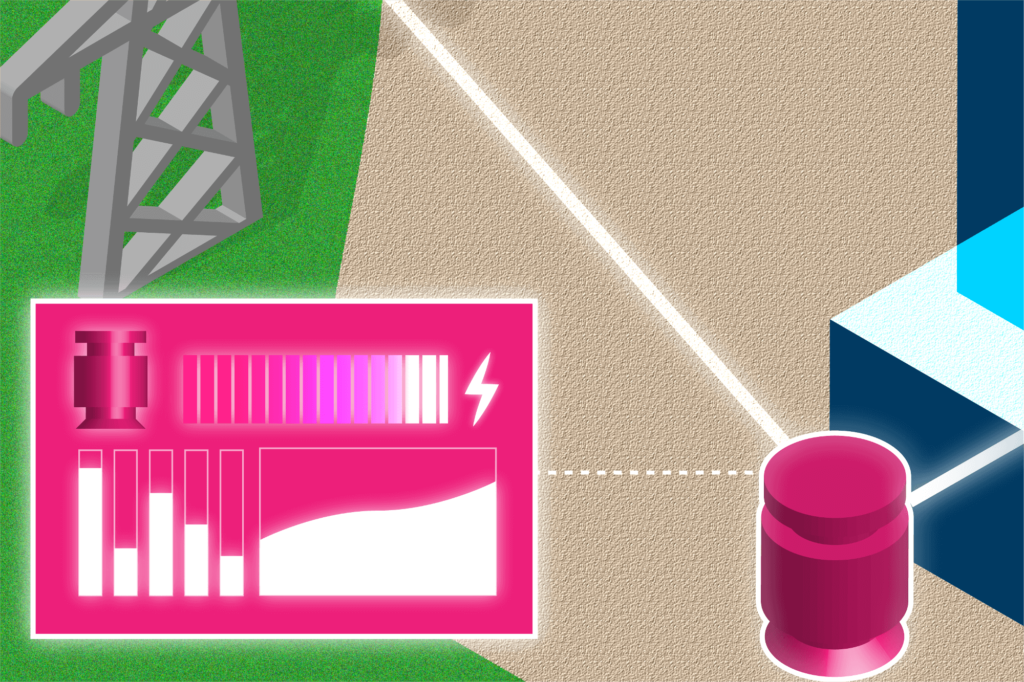EPRI, Industry Collaborators Explore the Enormous Potential Value of Data for Power Plants
Staff at Duke Energy were remotely monitoring a recently rebuilt steam turbine when their advanced pattern recognition software picked up a very small “step-change” in vibration. The change was so slight that the plant operators did not see it, but staff at one of the utility’s Monitoring and Diagnostic (M&D) Centers were concerned. Perhaps the new machine was just settling in. But a month later, after another small step-change in vibration, Duke Energy’s evaluation team concluded something was wrong and worked with plant operators to take the machine offline for inspection.
“What we found was that the turbine was throwing off little pieces of the turbine blades, which created a sudden change in the mass balance of the machine—and this was picked up as small changes in vibration,” said Greg Augspurger, technical manager of Duke Energy’s M&D Centers. “Had we not gone in, the machine probably would have torn itself apart, and we would have very likely had to replace the entire turbine at a cost of up to $35 million.”
This story points to the enormous potential value of data analytics in power plant operations and maintenance.
“The value of information is based on the ability to take action,” said EPRI Principal Project Manager Susan Maley. “Data in and of itself is worthless. Its value derives from getting the right information to the right person at the right time. This translates into good decisions that can help avert costly repairs or catastrophic equipment failures.”
Maley manages EPRI’s I4GEN initiative, which is helping utilities tap the value of data from digitized power plants. The vision is to deploy sensors on plant equipment, along with software tools to integrate and analyze sensor data, driving effective decision making.
Diagnostics are key to decision making. Today, this is achieved by teaming the best pattern recognition software with the diagnostic skills of technical experts with years of hands-on experience. Long term, I4GEN aims to advance technology that can learn diagnostic skills and offer predictive capabilities.
Extracting Value from Data at Duke Energy
Duke Energy has extensively deployed sensors to monitor components in its power plant fleet. At the utility’s M&D Centers in North Carolina, Indiana, and Florida, IT infrastructure and software collects, organizes, and analyzes massive amounts of sensor data on hundreds of key components, looking for patterns indicative of problems. Technical experts sort through alarms, diagnosing the most significant problems and helping the software to learn.
“Only about 1% of the alarms lead to opening a ‘case’ to investigate further, and 70% of those cases are actionable,” said Augspurger. “We have to cull the rest of the alarms and retrain the tool. A few years ago, for example, the cold from the Polar Vortex set off a storm of unexpected alarms. We had to go back and retrain the software to tell the equipment, ‘It’s okay if you’re that cold.'”
Recently, staff at an M&D Center noticed that an 11,000-horsepower air-cooled motor located outside a power plant was running warmer than expected, given the load and ambient temperature. They asked plant operators to check the air filter even though it was not due to be replaced for several months. The inspection revealed that the filter was clogged from dust kicked up on the dirt road serving a nearby construction project. The operators replaced the filter, avoiding expensive motor repairs.
“With the help of automated monitoring, we make these kinds of ‘catches’ several times a week in our fleet of power plants,” said Augspurger. “In 2017, we made more than 400 of them.”
Another important component being monitored is pumps. “We can remotely test pumps and assess their integrity,” said Augspurger. “We can let operators know which ones are degrading and which are running fine so they don’t take a good pump apart and break it.” It costs between $20,000 and $400,000 to rebuild a pump.
“Investment in good data collection and analysis pays for itself many, many times over as long as they give you actionable information,” said Augspurger. “We have structured our programs and business decisions to include this information.”
The investment in capturing the right data is small compared with the potential savings.
“To instrument a major component like a turbine, for example, you are looking at half a million dollars or less,” said Maley. “This can include sensors, software, and installation. Preventing a catastrophic failure of a turbine, generator, boiler, or feedwater pump can save tens of millions of dollars. Savings in routine, condition-based equipment inspections and repairs can add up to millions of dollars over the course of a year. Other EPRI utility members besides Duke Energy are making similar investments and embracing these advanced technologies.”
Predicting Remaining Useful Life, Processing Terabytes of Data
With its I4GEN program, EPRI is helping develop industry-wide approaches to digital technologies, analytics, and artificial intelligence to maximize the value of information. I4GEN is driving development of diverse technologies to increase the flow and sensitivity of data, aggregate and interpret it, and link it to diagnoses by technical experts. More than 20 utilities, technology providers, and other companies are participating.
“Plants are moving more and more toward becoming digital plants,” said Augspurger. “I4GEN exists to explore how far that can go, what it should look like, and what the path should be to get there. We’re not exactly sure what a digital plant is going to look like because a lot of plants are already 40–50 years old.”
One key interest is advancing diagnostic software. “Data is one thing, pattern recognition something else, but automated diagnosis and prediction are still a dream,” said Maley. “In order to take action, it would be wonderful to use data and computation to predict the remaining useful life of equipment. If you knew that there was a high probability of equipment failure in the next 3 months or 6 months, you could make several decisions, including how you operate the equipment, when to take it offline, and how to plan the outage. This can save you time and money.”
“What we’d like to do with I4GEN is take the digital power plant to the next level, to have the software do the diagnosis and quantify remaining useful life,” said Augspurger. “That for us is the ‘Holy Grail.'”
Augspurger says that Duke Energy is working with a new tool that uses neural networks to learn.
“Instead of training the software on normal pattern recognition, we are training it to use historical information of troublesome events and failures to uncover those unique fault signatures of impending failure.”
Developing analytics to manage the deluge of data from sensors is another major objective. “We are collecting terabytes of data every year at our M&D Centers,” said Augspurger. “We need data analytics that can handle the growing volume and translate all this data into actionable information.”
I4GEN is exploring various architectures to collect, integrate, analyze, share, and display information. “We’re trying to understand what that optimal structure will look like,” said Augspurger.
One possible solution: Deploy enough computing power in the field to distill performance signatures from equipment data and send those to a central location for analysis.
“If you find a signature that raises concerns, you go back to the field, discuss the concern with operations and maintenance staff, log into the computer that found the signature, and interrogate the data,” said Augspurger.
Mitigating Risk
One company that recognizes the promise of producing actionable information from data is FM Global, one of the world’s largest commercial and industrial property insurers. The company works with utilities to mitigate risk through analytics and engineering.
“FM Global is engaged in EPRI’s research and participates in our steam generator, maintenance, and combined-cycle programs to improve the availability and reliability of the plants and equipment it insures,” said Maley. “FM Global is a mutual insurance company, meaning that it is owned by its policyholders. Preventing property loss is as much to its benefit as it is to its clients. Insurance providers should be involved in the technologies EPRI is developing through I4GEN, not only to manage assets but to prevent losses.”
“We believe most losses are preventable through engineering,” said Erik Verloop, staff vice president and principal engineer for power generation at FM Global. “Our specialized property loss prevention engineers work with clients to reduce the risk of equipment failure. For the power industry, we have more than 50 boiler and machinery engineering specialists that visit power plants and work with plant management, operators, and engineers to identify vulnerabilities. Their recommendations help utility managers prioritize risk-reduction initiatives and help to set terms and conditions for the insurance policy, which includes coverage for equipment breakdown and forced outages.”
Using millions of data points collected by its loss prevention engineers along with extensive loss history data, FM Global makes predictions about what could go wrong for a property owner, where it could go wrong, and how bad it could be. “These predictive analytics allow our clients to understand which locations are most likely to suffer a loss and even identify which critical pieces of equipment are most at risk of breakdown,” said Verloop.
According to Verloop, automated monitoring of critical equipment and the data analytics to support rapid diagnostics further enhance risk management and property loss prevention and mitigation. “Real-time monitoring, diagnostics, and prognostics can help our clients pick up early warning signals or indications of problems in time to act, preventing escalation into a serious incident,” said Verloop.
Much of the risk is related to the major components. In dollar terms, according to Verloop, about 50% of the losses that occur in power generation are turbine related, and another 20% are generator related.
“Catastrophic losses, while infrequent, are often caused by rapidly deteriorating conditions, the failure of critical safety systems, and operators not responding appropriately to prevent the condition from escalating,” he said.
Verloop adds that more common losses are often attributable to slowly progressing, undetected component degradation that leads to failure. This is where remote monitoring, diagnostics, and prognostics can have the biggest impact on loss prevention.
Well-established communications protocols and workplace procedures also are critical. “I recall instances in which a remote monitoring center picked up on something but because of a breakdown in communication or a lack of timely action by the operator, property losses ran into the tens of millions of dollars,” said Verloop. “You want your processes and procedures to be so solid that an incident is a nuisance rather than a catastrophic event.”
The Right Information, Person, and Time
The value of information depends on its relevance and usefulness.
“Value comes down to getting the right information to the right person at the right time,” said Maley. “In operational settings, the right information might be raw data, or integrated data, or an interpretation, evaluation, or diagnosis. The right person might be the maintenance technician, the technical expert, or the operator who takes decisive action, or even more likely the full chain of capable people leading to action. The right time could be an immediate shutdown or repair, or a near-term deviation from a preplanned maintenance schedule to replace a filter. Or it could be preventive, months or even years in advance for a major overhaul. Anytime you can effectively use data to take action, you are adding value.”
Key EPRI Technical Experts:
Susan Maley
For more information, contact techexpert@eprijournal.com.
Artwork by David Foster Graphics






